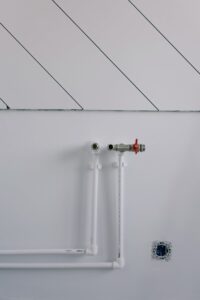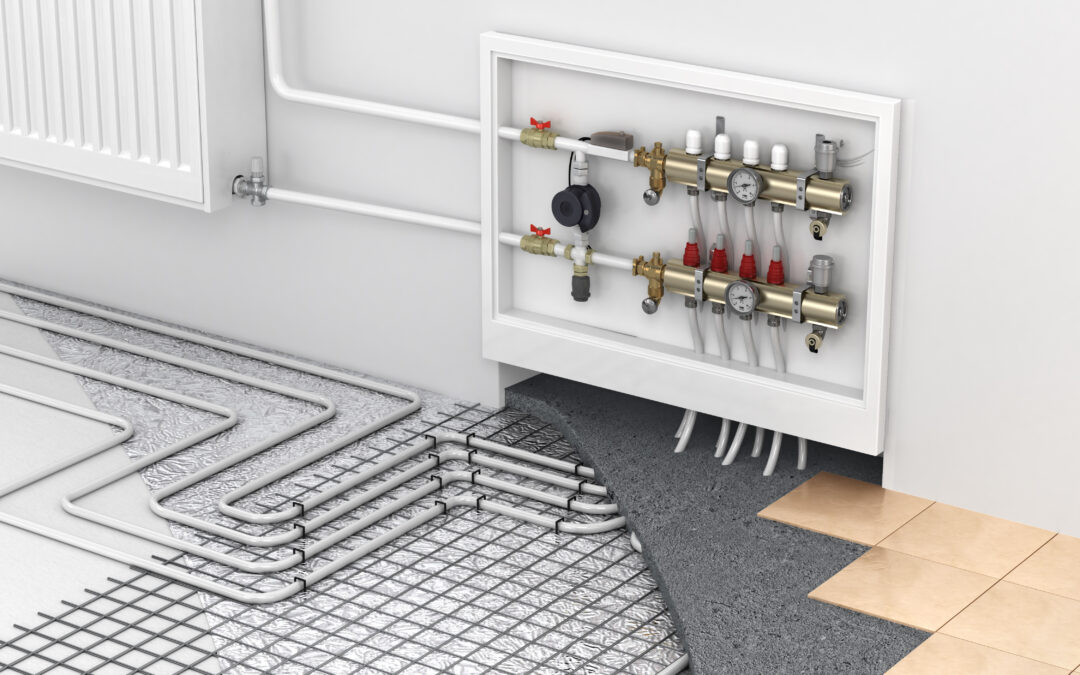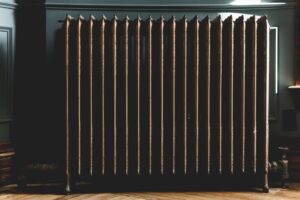Everything You Ever Wanted to Know About Hydronic Heating in One Place
There is no more incredible feeling than coming home to a beautifully warm and comfortable house. It needs a high-efficiency home heating system to keep the temperature where you want it to remain constant. A hydronic heating system is one kind of technology that may provide pleasant home heating.
If you heat your house using a furnace, there’s a good chance you don’t know much about boilers either. When choosing a furnace or boiler for a new house, there are many reasons why you should choose the latter. Continue reading to understand the fundamentals of boilers and the many advantages of hydronic heating systems. We will cover these topics in the hopes of making your choice a little more straightforward.
Things You Should Know
Before you invest in a boiler, here are the things you should know:
Hydronic Heat
Boilers heat your house by circulating hot water rather than air, as a furnace does—hence the name hydronic. In contrast to a water heater, a boiler heats but does not boil water and then distributes it as a hot liquid or steam via pipes to radiators, coils, or radiant floor systems. A significant advantage of a hydronic heating system over a forced-air system is that it is much less drying, which is particularly important during the winter months.
Boilers may operate on several energy sources, including natural gas, oil, electricity, and wood. Natural gas, electricity, and oil are the most common. It implies that you can choose how your system is fueled. If you have a particular preference, inform your technician to offer suggestions based on that choice.
Higher Levels of Consistency in Heating
Because boilers utilize radiant heat rather than air to warm objects, your house will feel consistently warm throughout and will keep its temperature for extended periods. Boilers take longer to heat a room than furnaces, but the wait is well worth it once the temperature reaches what you want.
Improved Air Quality
Furnaces heat your house by forcing air through installed ductwork. In its journey, it collects dust, dander, germs, and other pollutants regularly cycled through the air you breathe, and that may create health issues if not addressed. Because there is no moving air involved with a boiler, you will not encounter this issue while using one.
Better Efficiency
It has been shown that water retains heat energy much better than air. As a result, while your boiler is running, it is not only more efficient but also keeps you warmer for a longer period. Heat loss owing to leaking ductwork, which accounts for 30 percent of lost energy with forced-air furnaces, is likewise eliminated with radiant heating. Boilers make you feel comfortable while also saving you money—the ultimate comfort combo.
What Is a Hydronic Heating System and How Does It Work?
The heat from a hydronic heating system doesn’t transfer via the air in your house; instead, it transmits through the liquid in the design and then radiates the heat. Baseboard hydronic heaters or radiators may be used with hydronic heating systems, also known as radiant heating, to distribute heat uniformly throughout a building’s interior. You may place prefabricated panels or radiant flooring in the concrete foundation for even thermal heating, on top of existing flooring, or in the concrete foundation for even thermal heating.
Several Advantages
Hydronic heating is a cost-effective and environmentally friendly method of distributing clean, pleasant, and comfortable heat throughout your house. If you’ve never experienced hydronic heating before, you’ll be surprised at how evenly it distributes the heat. There are no longer any hot or cold zones anywhere in your house anymore.
Zones
One significant advantage of hydronic heating systems over forced air systems is the ability to establish different temperature zones around your house to control the temperature. As an alternative to using a single thermostat to manage the whole system, you may set different temperatures in different regions or rooms. It may be beneficial at night to ensure that your room does not get excessively hot or too cold because someone in another room likes it that way. It is unnecessary to be concerned with temperature fluctuations caused by leaving doors open or closed since there is no continuous cycle of pushing warm air out and pulling cool air in.
Levels of Humidity
Radiant heat does not dehydrate the air in your house. Forced air systems will remove moisture from the air as they heat it, resulting in imbalanced humidity levels in the room. Because it generates radiant heat by a closed system that utilizes liquid, it does not affect the humidity in your house.
Warm Floors
Radiant flooring helps to keep your floors warm by reflecting heat. Those crisp, chilly mornings when you first get out of bed are delightful. Warmth is distributed throughout the floor via tubes underneath it, and the base itself serves as a conductor.
Quiet
Radiant heating systems are very silent. There is no noise from a furnace starting up or the creaks and moans produced by warm air traveling through cold air ducts. Aside from that, you won’t notice the rush of air that forced-air systems make.
No Ducts
Hydronic systems do not need the use of air ducts or return air systems, which may take up a significant amount of space in your walls and ceilings. If your house did not arrive with air ducts already installed, having them installed may be messy and costly. Tubes for hydronic systems connect to the floor joists or are concealed in the walls and routed around existing pipes and ductwork.
Dust, Pollen, and Allergens
Because hydronic heaters do not rely on ductwork, they are both quieter and more environmentally friendly. Forcing air through ducts and into rooms is the function of forced-air systems. This airflow may stir up dust, pollen, pet dander, and other allergens. If the ducts are clogging, the situation may get much worse. To trap the bigger particles, you must equip forced-air systems with air filters. However, even the best air filters will not capture 100% of the particles. Furnace filters are not necessary for hydronic systems.
Energy Efficient Design
Heat pumps and other hydronic heating systems are more efficient than different types of heating. Air is a poor heat conductor due to its low thermal conductivity. In the course of their journey viaducts, it may lose energy or leak through cracks or seams. Reduced energy consumption requires both heating the water and transferring the heat around your house. In addition, water is more effective in retaining heat.
Compared to alternative heating techniques, radiant heat systems may save you as much as 20-40 percent on your heating costs each year. Having to switch on and off your furnace all day to handle temperature variations accounts for a portion of the savings you realize.
Lower Temperatures are More Comfortable
Radiant flooring is most comfortable for the floor, ensuring that your feet remain warm. The warm air is closest to where you spend the bulk of your time, whether you are sitting, standing, or lying down since installed baseboard heaters or radiators are low to the ground as well. In addition, since hydronic systems do not push air out, there are no cool breezes to keep you feeling comfortable.
Hydronic Heating System Process
A boiler uses conduction to heat water or liquid contained inside the unit. During the circulation of the hot fluid through the pipes, it warms anything that comes into contact with it. This utilizes in radiant flooring, for example, when conduction – rather than radiation – heats the floor. Not only will you have a warm room as a result of this, but you will also be able to avoid having cold flooring on chilly mornings. After reaching the radiator or hydronic baseboard heater, the hot liquid radiates the heat produced by the water throughout the space. Learn more about the operation of hydronic heating systems.
Hydronic Radiant Heating Systems are available in a variety of configurations.
Your hydronic heater comprises seven fundamental components that all work together to make it function properly. The boiler, which is at the heart of the system, is responsible for heating the water. There are various kinds of boilers and choices for how the water heats and many different heat exchangers to transfer heat to your house. There are also many kinds of heat exchangers to transport the heat to your home. Learn more about the many types of hydronic radiant heating systems, as well as the various choices available.
Instructions on How to Install Hydronic Heating
There are many different methods to install hydronic heating systems. The wet installation refers to the process of placing pipes within the concrete as it is poured or pouring a thin concrete coating on top of the lines to complete the installation. The tubes are in place by prefabricated panels in a dry structure. It is possible to conceal piping for hydronic radiators or baseboard heating inside walls or floor joists. The installation cost may vary significantly depending on the installation technique used and the specifications of your house. Find out more about the installation of hydronic heating systems, as well as the associated costs.
Approximate Cost of Installing Hydronic Heating
Prices may vary significantly- depending on the system installed and the size of the building in question–it is essential to examine these specifics with a specialist to decide if Hydronics is the best option for your requirements.
What Point Should You Consider Recommissioning?
A comprehensive recommissioning of an aging Hydronics system may frequently extend the life of a problematic Hydronics installation by several years, at a fraction of the expense associated with a complete overhaul. A recommissioning is analogous to pressing the reset button on a computer. Most of the time, maintenance focuses on the repair or replacement of individual components, with less attention paid to the overall operation of the system.
As a result, you will often wind up with a Frankenstein system consisting of random, poorly compatible components that burden the system’s overall functioning over time. A recommissioning procedure will restore the system to its original condition.
As part of the procedure, a technician will first conduct an efficiency assessment, including looking for items such as:
The pressure of a gas
Burner cleanliness is essential.
Elements with an electrical charge
Efficacy of the pump
The amount of air in the room
You may typically complete this assessment within a single business day. Then, you can explore your future choices and establish a regular servicing plan to ensure that everything continues to operate at peak performance.
When Constructing a Hydronic Heating System, What Should You Avoid at All Costs?
Our experts highly advise clients to buy appliances and components that are readily accessible on the open market. Seek goods made in the United States; some HVAC firms may urge you to purchase parts from less well-known vendors with whom they have developed business ties, which may lead to compatibility problems later on when repairing and replacing components of your system.
It is also critical to choose the most appropriate appliance for your requirements. It is one of the most frequent issues that our repair specialists encounter that concerns in-floor heating. To operate correctly, these systems need low-temperature water (LTW), with an average temperature of 80 to 90 degrees Fahrenheit. Optimal operation requires a high-efficiency boiler. The use of a regular atmospheric boiler has far too often been substituted. Atmospheric boilers require a return water temperature of at least 130°F; lower temperatures will cause the heat exchanger to warp, resulting in frequent and expensive repairs throughout the boiler’s life.
This case in point serves as a reminder that you should always work with a trustworthy firm with an established track record in Hydronics design and installation services.



Recent Comments